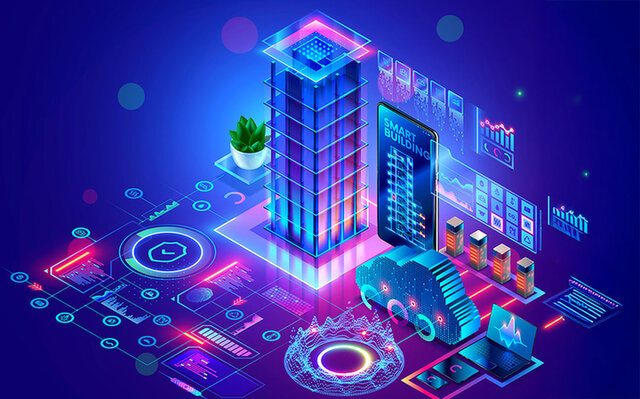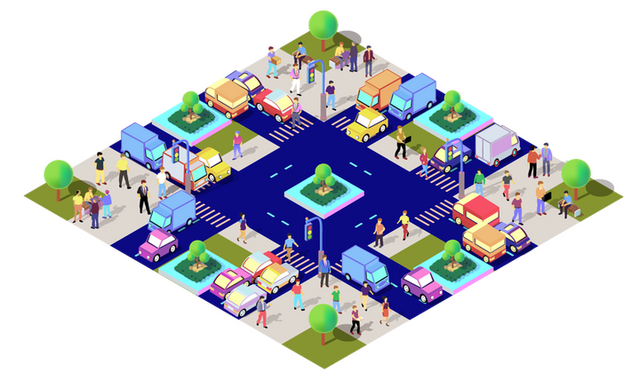feature
Building the future: smart cities powered by IoT
Smart cities leverage the Internet of Things (IoT) to enhance urban living, optimise resource usage, and improve governance.
By connecting devices, infrastructure, and services, IoT enables cities to collect, analyse, and act on data in real-time, creating more sustainable, efficient, and citizen-focused environments. This article explores the technologies powering smart cities, their applications, challenges, and the future outlook for urban innovation.
The core technologies of IoT in smart cities
IoT forms the backbone of smart cities, supported by complementary technologies:
- IoT sensors and devices
Sensors embedded in infrastructure collect real-time data on air quality, traffic flow, energy usage, and more. These devices are essential for monitoring and controlling urban systems. - Edge computing
Processing data closer to its source reduces latency and improves efficiency. For instance, edge computing enables faster responses in traffic management systems. - 5G connectivity
The high-speed, low-latency capabilities of 5G networks facilitate seamless communication between IoT devices, supporting critical applications like autonomous vehicles and telemedicine. - AI and machine learning
AI analyses vast datasets generated by IoT devices, identifying patterns and making predictive decisions, such as optimising energy grids or forecasting maintenance needs. - Cloud platforms
Centralised cloud platforms store and process IoT data, providing scalability and accessibility for urban administrators.
Sensors embedded in infrastructure collect real-time data on air quality, traffic flow, energy usage, and more.

Applications of IoT in smart cities
- Transportation and mobility
- Smart traffic management
IoT sensors monitor traffic conditions, enabling adaptive traffic lights and reducing congestion. London’s Smart Mobility Living Lab integrates real-time data for traffic optimisation. - Autonomous vehicles
IoT-connected infrastructure supports self-driving cars, enhancing safety and efficiency. - Public transit optimisation
IoT solutions track buses and trains, providing real-time updates to commuters and improving operational efficiency.
- Smart traffic management
- Energy and sustainability
- Smart grids
IoT-enabled energy grids balance supply and demand, integrating renewable sources like solar and wind. - Energy-efficient buildings
Smart systems monitor and adjust energy consumption, reducing costs and emissions. For instance, Manchester’s Civic Quarter Heat Network uses IoT to optimise district heating.
- Smart grids
- Public safety and security
- Surveillance systems
IoT-powered cameras with AI analytics enhance public safety by detecting suspicious activities. - Disaster management
Sensors monitor environmental conditions, providing early warnings for floods, earthquakes, and wildfires.
- Surveillance systems
- Waste management
- Smart bins equipped with IoT sensors optimise waste collection routes, reducing fuel consumption and improving efficiency. Leeds City Council has trialled smart waste systems to cut operational costs.
- Healthcare and well-being
- Telemedicine
IoT devices enable remote health monitoring, improving access to healthcare in urban and remote areas. - Air quality monitoring
IoT sensors track pollution levels, informing policies to improve urban air quality. Birmingham’s Clean Air Zone integrates IoT for real-time pollution tracking.
- Telemedicine
- Citizen engagement and governance
- Open data platforms
IoT-powered dashboards provide citizens with access to city data, fostering transparency and civic participation. - Smart voting systems
IoT-enabled voting mechanisms streamline electoral processes.
- Open data platforms
Case studies in IoT-driven smart cities
- Singapore
Singapore’s Smart Nation initiative integrates IoT across transportation, healthcare, and governance. The city-state uses IoT sensors for smart traffic management, autonomous vehicle trials, and predictive healthcare. - Barcelona, Spain
Barcelona’s IoT-enabled infrastructure includes smart lighting, waste management, and water systems, resulting in significant energy savings and improved urban efficiency. - London, UK
London’s Smart London Plan leverages IoT to enhance mobility, energy, and public services. The city’s partnership with the Smart Mobility Living Lab demonstrates its commitment to sustainable urban innovation.
IoT systems generate vast amounts of sensitive data, raising concerns about surveillance and misuse.
Challenges in deploying IoT for smart cities
- Cybersecurity risks
IoT devices are vulnerable to cyberattacks, which could disrupt critical urban systems. Robust cybersecurity frameworks are essential to safeguard data and infrastructure. - Interoperability issues
Integrating IoT devices from multiple vendors can lead to compatibility challenges. Establishing standardised protocols is crucial for seamless operation. - Data privacy concerns
IoT systems generate vast amounts of sensitive data, raising concerns about surveillance and misuse. Regulations like the UK’s General Data Protection Regulation (GDPR) aim to address these issues. - High implementation costs
Deploying IoT infrastructure requires substantial investment in sensors, networks, and data management platforms, which can be a barrier for cities with limited budgets. - Digital divide
Ensuring equitable access to smart city technologies is critical to prevent marginalisation of underprivileged communities.
The future of IoT in smart cities
- AI-Driven urban intelligence
AI will increasingly enhance IoT systems, enabling real-time decision-making and predictive insights for more adaptive urban environments. - Decentralised IoT networks
Blockchain technology could decentralise IoT data storage, improving security and reducing dependency on centralised platforms. - Sustainable IoT solutions
Future IoT deployments will focus on energy efficiency and reducing environmental impact, aligning with global sustainability goals. - Citizen-centric design
Smart cities will prioritise citizen engagement, using IoT to improve quality of life while ensuring inclusivity and accessibility. - Global collaboration
Cities worldwide will share best practices and technologies to accelerate IoT adoption and address common urban challenges.
Conclusion
IoT is at the heart of smart city innovation, enabling urban environments to become more sustainable, efficient, and responsive. By integrating IoT technologies across transportation, energy, healthcare, and governance, cities can enhance quality of life for their residents. However, addressing challenges like cybersecurity, privacy, and digital inclusion is essential to ensure equitable and secure deployment. As IoT technology continues to evolve, smart cities will play a pivotal role in building a resilient and sustainable urban future.
